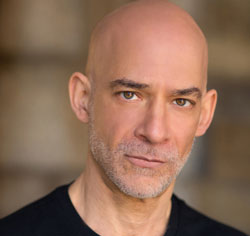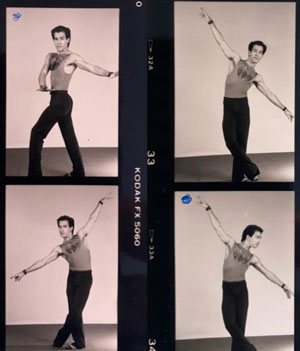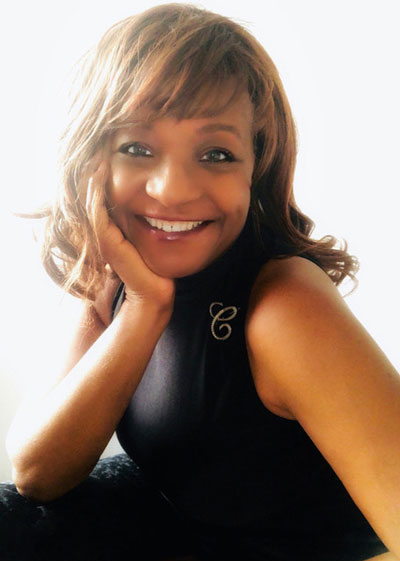Dancers Over 40 ARTS Legacy

Joe Spano | Cynthia ElaneJon SpanoWhat inspired you to become a dancer?
During senior year, just before Thanksgiving, I walked into the theatre for the first time and saw this masculine work-of-art wearing red tights and a red headband sweating through rehearsal of the musical’s riveting Sword Dance. The dancer in red was playing “Harry Beaton” and his name was Lee Mathis. Lee gave me permission to feel comfortable in my own skin, to embrace my sexuality. Lee appears twice in the opening montage of All That Jazz and would go on to dance in Broadway’s short-lived Zoot Suit, tour in Pippin, and, in the ‘90s, land a role on General Hospital. Lee played “Jon Henley,” a character dying of AIDS. I had no idea at the time that Lee was on the soap because we lost touch when he moved to L.A. What I also didn’t know was that Lee himself had AIDS and that the writers of the soap aligned the character’s illness with Lee’s battle, right up to the time of Lee’s own death. Lee died in 1996 and I didn’t find out until 2000. I was devastated. But it was Lee who led me into dance, seduced me, and tantalized me with thoughts of moving to New York City, which I did three months after graduating high school. Before escaping Dodge, though, I did No, No Nanette; Funny Girl; and Carousel at Carousel, and was also prop-boy and assistant to Dorothy Lamour when she played the mother role in Barefoot in The Park. But what saddens me most is that Lee is gone forever. We’d be good pals in our old age. And no one from the dance world (because so many of our peers died in the ‘80s and ‘90s) remembers this talented, unique, and effervescent man. If any members of DO40 worked with him, be sure to touch base! Who was influential in your career? When I first moved to New York, I had a hundred bucks of graduation money in my pocket. I had no financial back-up or assistance of any kind, so booked a room at the McBurney YMCA and landed a job at a health-food/fast-food restaurant called Amy’s in the West Village. Madonna worked there for a few weeks and was taking class at Ailey. So I checked out a class at their studio and it was daunting, beyond my skill level. But also working at Amy’s was Camille Hickman, who today is a casting director at Lincoln Center Theatre. Camille suggested Phil Black. And it was at Phil’s studio that I took my first professional classes. Phil taught with a stick and called me “Daffodil” when I goofed a combination. I still remember the day (a “Lyrical Tuesday”) when I had improved so quickly that he said to the class, “Jon knows that time waits for no man!” I studied with Phil for nearly three years, but reached a point where my technique was not improving so I started scattershot ballet classes with various teachers: Melissa Hayden and Willy Burmann at their Columbus Circle studio and Finis Jung and Liane Plane at Finis’s studio on 77th and Broadway. Also a few classes at Richard Thomas’s studio near Zabar’s. His dog attended class. These were the days when teachers smoked while they taught. Jazz teachers Michael Owens, Michelle Assaf, and Rick Atwell brought my technique to the next level. They taught in the Ed Sullivan building in a studio run by Douglas Wassel and his wife Star Danias. Later, Nanette Charisse really took a liking to me and gave so much. Same with Madame Gabriela Darvash, whose patience and care made me even stronger the quiet victim as he’s usually portrayed. When I said to Maria, “He killed your brother!” you could hear a pin drop, always a sign you’ve reached the audience without pushing or diminishing. And I got laughs when Chino says, early on: “But this is a shop for ladies.” I was never the chorus-boy poster child. Meaning, I wasn’t a smiley automaton indistinguishable from the others in a line up. It wasn’t intentional; there were just SO many better chorus boys than me. On tour in Europe I read Brecht, Herman Hesse, and Jean Genet while most of the cast sang along with cassette recordings of Les Mis and Phantom. I was just not that interested in a long career in musicals. Funny or frightening story:
There are so many acting parts I’d love to go back and do because I get it now. I work relentlessly on storytelling, truth-telling, authenticity, which is the hard one. It takes a LOT of work to look like you’re doing nothing. It’s often also hard to accept that you and you alone are enough in the part, and to trust that, and to not try to be anything else. Now for the funny: Our Tango in Evita was basically a Cha-Cha. What experience or legacy you would like to pass on? In my Anthology of Plays, a collection of 20 short-plays and monologues I’ve had produced, and which will be available as e-Book and paperback through Amazon in just a few months, I write the following “Afterward”: Strive to be good, not great. Perfection is impossible and pursuing it, a waste of energy that leads to disappointment. Hang in there no matter what obstacles life throws at you. Shit happens. Shit is always happening. The biggest setbacks and failures are often the experiences that bring you to your next level of development and help you reach your greatest potential. Embrace the failures; don't despair in them. Listen to feedback from experts. Some of it is useful. Also remember that everyone has an opinion. Always be learning. You will never reach a point where you know enough. But don’t let what you don’t yet know stop you from moving forward. You will never know enough. Study with great teachers, those who are simultaneously honest yet supportive. Those who call you out on dishonest art and subsequently make you and your work more authentic. Stand up for yourself and your art. Ask for help and get help when you need it. With your craft and with your life. Recognize your demons but don't wallow in their space or they will drag you down. They are your teachers; the darkest parts of your being can lead you to the greatest light. The darkness that resides in all of us is part of our imagination. It is in that dark space that revelation and creation exist. Your greatest fears are often catalysts for courage. Commune with your core self: it's everything. Wishing you were someone else, or comparing ourselves to others, is death. There is no greater gratitude in life than self-love, which is the opposite of narcissism. Through self-love (the unconditional state-of-being that treasures the gift of life) the spirit of generosity and the freedom to self-express flow freely. If you’re into social media at all, feel free to connect on Facebook, Instagram, or send me an email. I’d love to hear from you. www.jonspano.com
Cynthia Elane
What inspired you to want to become a dancer? My mom was a voice and piano teacher who loved the Broadway classics. At age four I would dance around the room as she played. The first dance film I ever saw was White Christmas and I fell in love with Vera Ellen. I would go around the house practicing “nerve taps” - that's when I knew I wanted to be a dancer. After that I watched every musical that was ever televised at the time. My mom couldn't really afford to pay for dance lessons so when I was about 8 she bartered piano lessons in exchange for my dance training at The Gloria Jackson Dance studio in Queens where we lived. There Ms. Gloria introduced me to every style of dance. At age 12, I auditioned and was accepted as a dance major into the High School of Performing Arts where I graduated 1975. Who were the most influential people in your career? My mom and Ms. Gloria were the first influential people along with all the performers I grew up watching on TV, like Gene Kelly, Gwen Verdon, Chita Rivera and Sammy Davis Jr. Bob Fosse set the standard of what kind of dancing and performer I wanted to be. I spent most of my career auditioning for him. It was the hope of being in one of his shows that challenged and compelled me to go to class every day and audition for any and every show. I worked as a professional dancer for 20 years. What teachers were the most influential in your career? Arthur Mitchell and Karel Shook of DTH saw me in a dance performance and offered me a summer scholarship. I had the opportunity to perform with one of their junior performance companies. Ballet had been my first love, but did not pursue it because I was told I was not the right body type. It was the most amazing experience to be in a room with beautiful ballerinas who all looked like me. I had the opportunity to perform in their junior company for a year. It gave me the foundation and the confidence I needed to go out and pursue any style of dance I wanted. Other influential teachers included Phil Black, Chuck Kelly, Frank Hatchett, Betsy Haug and JoJo Smith. What were your most memorable dance performances? It took me four years but in 1979, I was finally cast in a production of The WIZ as a swing dancer and received my Equity card. All my performances were memorable, but most special were perfor-mances with my idols like Shirley MacLaine and Gene Kelly in the 1986 televised Liberty Special, and performances with Gregory Hines, Peter Allen and Sammy Davis Jr. in Monte Carlo, along with the film version of A Chorus Line. 
Sammy Davis Jr. What was the most frightening or funny story? Early on in my career I once invited a colleague whom I had always been intimidated by growing up, to see a performance in which I had a solo. When I stepped out on stage and saw him sitting there, all of a sudden everything went black. The next thing I remember was being hoisted back on stage from laps of people in the front row. To this day I no longer look directly out into the audience when performing nor has he been invited to any of my future performances. Thank goodness it never happened again. What would you say to the next generation of dancers? If dancing is what you love, don’t let anyone or anything discourage you from pursuing it. Keep challenging yourself every day to be better, stronger and wise about the business end. Have a longevity plan. Today at 63 I am just as much in love with dance as all those years ago, but transitioned into an actor/ singer who moves well and I am also a performance photographer and teach performance classes. Broadway is still my goal although my ultimate goal is to be able to perform wherever and whenever I can. Cindicated Images Photography |

 Lust, sex, and infatuation. When I had just turned 17, I was a local hire for the chorus of Brigadoon at the Carousel Dinner Theatre in my hometown of Ravenna, Ohio, the theatre’s original site. It was serendipitous to have that theatre in town, literally, a life-saver. I hated high school and the redneck mentality of the area, and the Carousel was a respite, an oasis from both.
Lust, sex, and infatuation. When I had just turned 17, I was a local hire for the chorus of Brigadoon at the Carousel Dinner Theatre in my hometown of Ravenna, Ohio, the theatre’s original site. It was serendipitous to have that theatre in town, literally, a life-saver. I hated high school and the redneck mentality of the area, and the Carousel was a respite, an oasis from both.  First the frightening: After West Side, the same production company brought me back for HAIR! for its first European tour since the ‘70s. I understudied “Berger” and my inner Eve Harrington (come on, admit it: there’s a little bit of Eve in all of us) wanted to go on. Well, I got my chance. I had solid vocal training so the singing wasn’t a problem. But I couldn’t act the part. I was intimidated by the actor already playing the role, and could neither imitate his performance nor find a way to make it my own. Whereas acting in West Side was instinctual, acting in HAIR!, as the lead, was out of my comfort zone and I totally SUCKED.
First the frightening: After West Side, the same production company brought me back for HAIR! for its first European tour since the ‘70s. I understudied “Berger” and my inner Eve Harrington (come on, admit it: there’s a little bit of Eve in all of us) wanted to go on. Well, I got my chance. I had solid vocal training so the singing wasn’t a problem. But I couldn’t act the part. I was intimidated by the actor already playing the role, and could neither imitate his performance nor find a way to make it my own. Whereas acting in West Side was instinctual, acting in HAIR!, as the lead, was out of my comfort zone and I totally SUCKED. 
